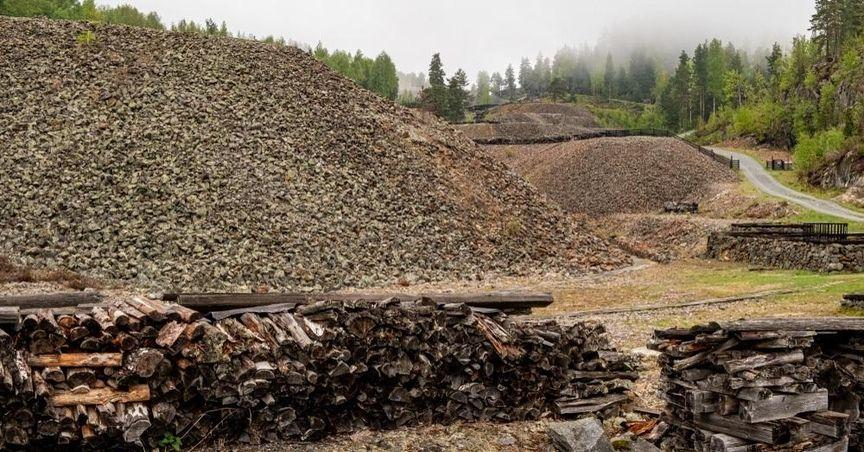Highlights
- Extensive sampling at an 8,800 km² project area in Cameroon has produced high-grade heavy mineral concentrates with notable rutile content.
- Initial assays reveal valuable heavy mineral (VHM) assemblages, including rutile levels reaching up to 69.8% within the Minta region.
- Off-target training samples have demonstrated commercial-grade quality, reinforcing the prospect of a significant rutile province.
Peak Minerals Ltd (ASX:PUA) has recently concluded an extensive sampling campaign at its 8,800 square kilometre Minta rutile project in Cameroon, with the first batch of assays yielding promising results. The detailed analysis, conducted in collaboration with the CSIRO in Perth and processed at the Diamantina Laboratory, has brought forward findings that suggest the potential discovery of a significant rutile province.
Comprehensive Sampling and Analytical Techniques
The exploration program, initiated at the end of 2024, involved collecting material from various points across the project area. Samples, including sand and oversize fractions, were subjected to heavy liquid separation (HLS) and underwent modal mineralogy evaluation using scanning electron microscopy (SEM) alongside grain counting techniques. Such rigorous testing was designed to capture a detailed picture of the heavy mineral distribution within the area.
Analytical efforts focused on identifying the mineralogical assemblages present in the VHM, with an emphasis on rutile—a titanium dioxide-bearing mineral known for its high economic value. The results demonstrated that some samples achieved total valuable heavy minerals (VHM) percentages as high as 93%, with rutile content in those VHMs reaching up to 69.8%. These figures suggest that, in several instances, the mineralisation exhibits a high concentration of rutile, which is of considerable interest given the potential applications of rutile in various industries.
Variation Across the Exploration Area
While numerous samples have returned spectacular high-grade results, there was some variability observed across the project area. In the northeast region, one of the lower-performing zones registered a VHM assemblage of 16.9%, where monazite—a phosphate mineral commonly associated with rare earth elements—dominated the composition at 35.6%. Zircon, another heavy mineral, accounted for a notable 21.5% in this region. These variations in mineral assemblages highlight the geological diversity present across the exploration area and underscore the importance of thorough and systematic sampling programs to delineate the most prospective zones for further exploration.
Training Exercises Yield Commercial-Grade Outcomes
An interesting aspect of the exploration program was the inclusion of off-target locations designated as training exercises. These were conducted to ensure that correct drilling and sampling techniques were adhered to during the reconnaissance drilling program. Despite not being primary targets, the samples obtained from these locations still delivered very high value, commercial-grade VHM results. The unexpected high quality of the material from these off-target samples not only validates the sampling methods but also hints at the broader potential of the project area.
Broader Implications and Future Exploration
The high-grade results from the first batch of assays have significant implications for the overall exploration strategy at the Minta project. The discovery of rutile nuggets across the project area, coupled with visual estimates of up to 5% total heavy minerals (THM) in residual soils from select samples, further enhances the geological case for a major rutile province in Cameroon. With approximately 65% of the exploration program now completed, there remains substantial scope for continued sampling and detailed analysis. The initial findings have set a strong foundation for subsequent phases of exploration, where further delineation of high-grade zones will be a key focus.
Continued efforts are expected to incorporate additional sampling campaigns, more refined drilling programs, and comprehensive geophysical surveys to better define the extent and grade of the rutile mineralisation. This methodical approach aims to provide a detailed understanding of the underlying geology and to map out the distribution of heavy mineral assemblages across the entire project area. The results to date suggest that the Minta project could be a significant contributor to the global rutile resource base if subsequent exploration continues to yield similar high-grade mineralisation.
Concluding Remarks
The initial assay results from the Minta rutile project represent a noteworthy milestone in the exploration efforts being undertaken in Cameroon. By combining advanced analytical techniques with a systematic sampling strategy, the exploration program has not only confirmed the presence of high-value heavy mineral assemblages but also raised the prospect of a significant rutile province emerging from the region. The encouraging data, derived from both targeted and off-target samples, offers a strong impetus for continued exploration and further geoscientific investigation at the Minta project.
The ongoing exploration program continues to unravel the mineralogical complexity of the region, positioning the project as an important area of interest within the broader context of heavy mineral exploration in Africa. As further data becomes available, it is anticipated that additional insights will emerge, solidifying the understanding of the rutile potential in this extensive and geologically diverse landscape.




